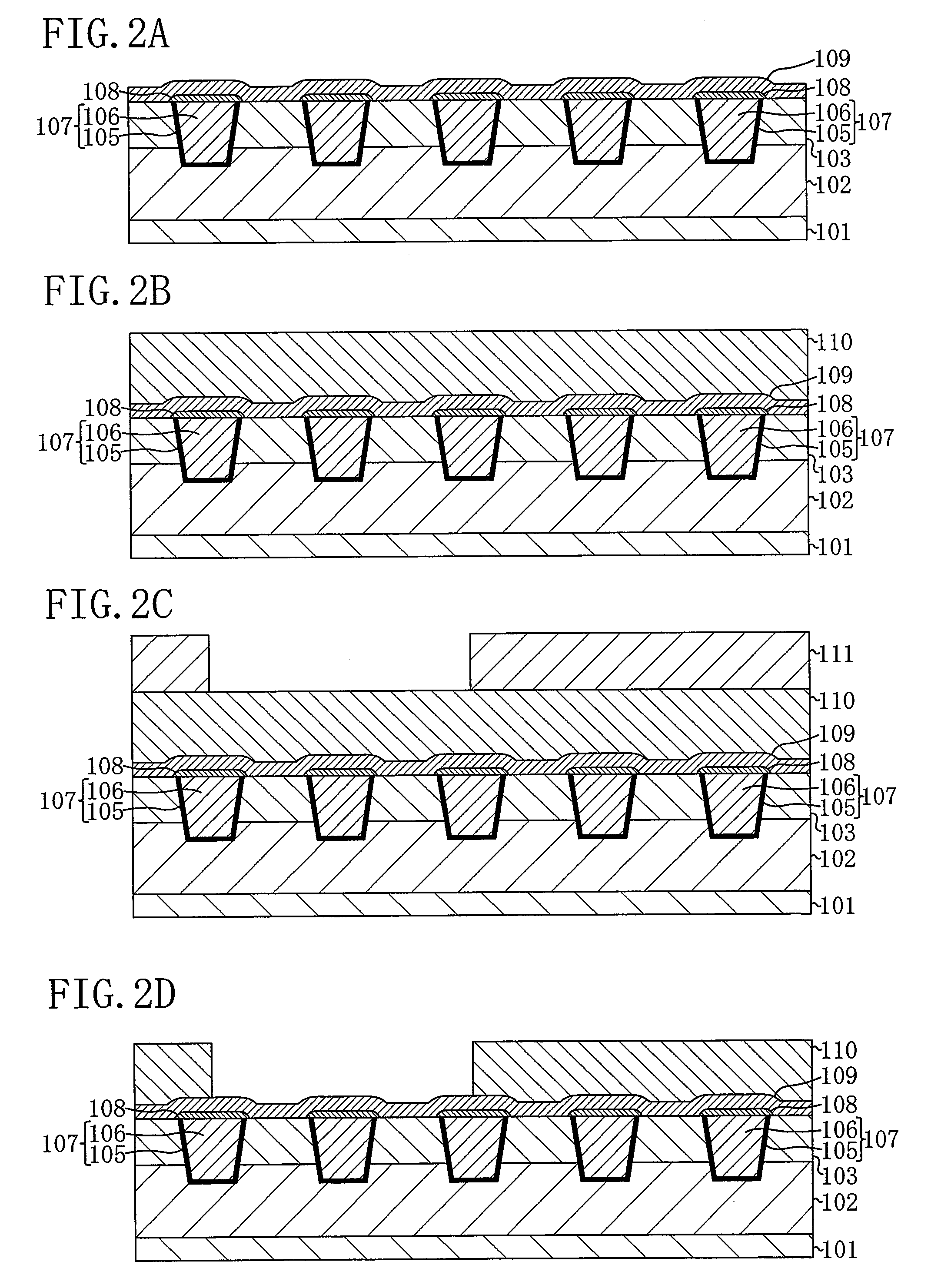Method for fabricating semiconductor device
a semiconductor device and manufacturing method technology, applied in semiconductor devices, semiconductor/solid-state device details, electrical devices, etc., can solve the problems of oxidation or damage of the cap film b>7/b>, above-mentioned conventional techniques, etc., and achieve the effect of sufficiently reducing the capacitance between the wires
- Summary
- Abstract
- Description
- Claims
- Application Information
AI Technical Summary
Benefits of technology
Problems solved by technology
Method used
Image
Examples
embodiment 1
[0033]A method for fabricating a semiconductor device according to Embodiment 1 of the present invention will be described below with reference to the drawings.
[0034]FIGS. 1A through 1D, FIGS. 2A through 2D, and FIGS. 3A through 3D are cross-sectional views illustrating respective steps in the method for fabricating the semiconductor device according to Embodiment 1.
[0035]First, as illustrated with FIG. 1A, over a semiconductor substrate 101, an inter-layer insulating film 102 and an inter-wire insulating film 103 are formed. It is to be noted that in the present embodiment, as the inter-layer insulating film 102, for example, a SiOC film is used, and as the inter-wire insulating film 103, for example, a TEOS (tetraethylorthosilicate) film is used.
[0036]Then, as illustrated with FIG. 1B, photolithography and dry etching are performed to form wiring grooves 104 which penetrate through the inter-wire insulating film 103 and reach inside the inter-layer insulating film 102.
[0037]Then, ...
embodiment 2
[0058]A method for fabricating a semiconductor device according to Embodiment 2 of the present invention will be described below with reference to the drawings. It is to be noted that descriptions as to Embodiment 2 are given of only different points from Embodiment 1 described above, and the same descriptions as those of Embodiment 1 are not repeated.
[0059]FIG. 4A is a cross-sectional view illustrating a step of the method for fabricating the semiconductor device according to Embodiment 2. The present embodiment is different from Embodiment 1 in that between the step of forming the air gap grooves 112 of FIG. 3C and the step of forming the air gaps 114 of FIG. 3D (the step of forming the inter-layer insulating film 113), the hard mask film 110 is removed by wet etching or the like as illustrated with FIG. 4A. This makes it possible to directly deposit the inter-layer insulating film 113 on the protection film 109 in the step of forming the air gaps 114 of FIG. 3D. Therefore, it is ...
PUM
 Login to View More
Login to View More Abstract
Description
Claims
Application Information
 Login to View More
Login to View More - R&D
- Intellectual Property
- Life Sciences
- Materials
- Tech Scout
- Unparalleled Data Quality
- Higher Quality Content
- 60% Fewer Hallucinations
Browse by: Latest US Patents, China's latest patents, Technical Efficacy Thesaurus, Application Domain, Technology Topic, Popular Technical Reports.
© 2025 PatSnap. All rights reserved.Legal|Privacy policy|Modern Slavery Act Transparency Statement|Sitemap|About US| Contact US: help@patsnap.com



